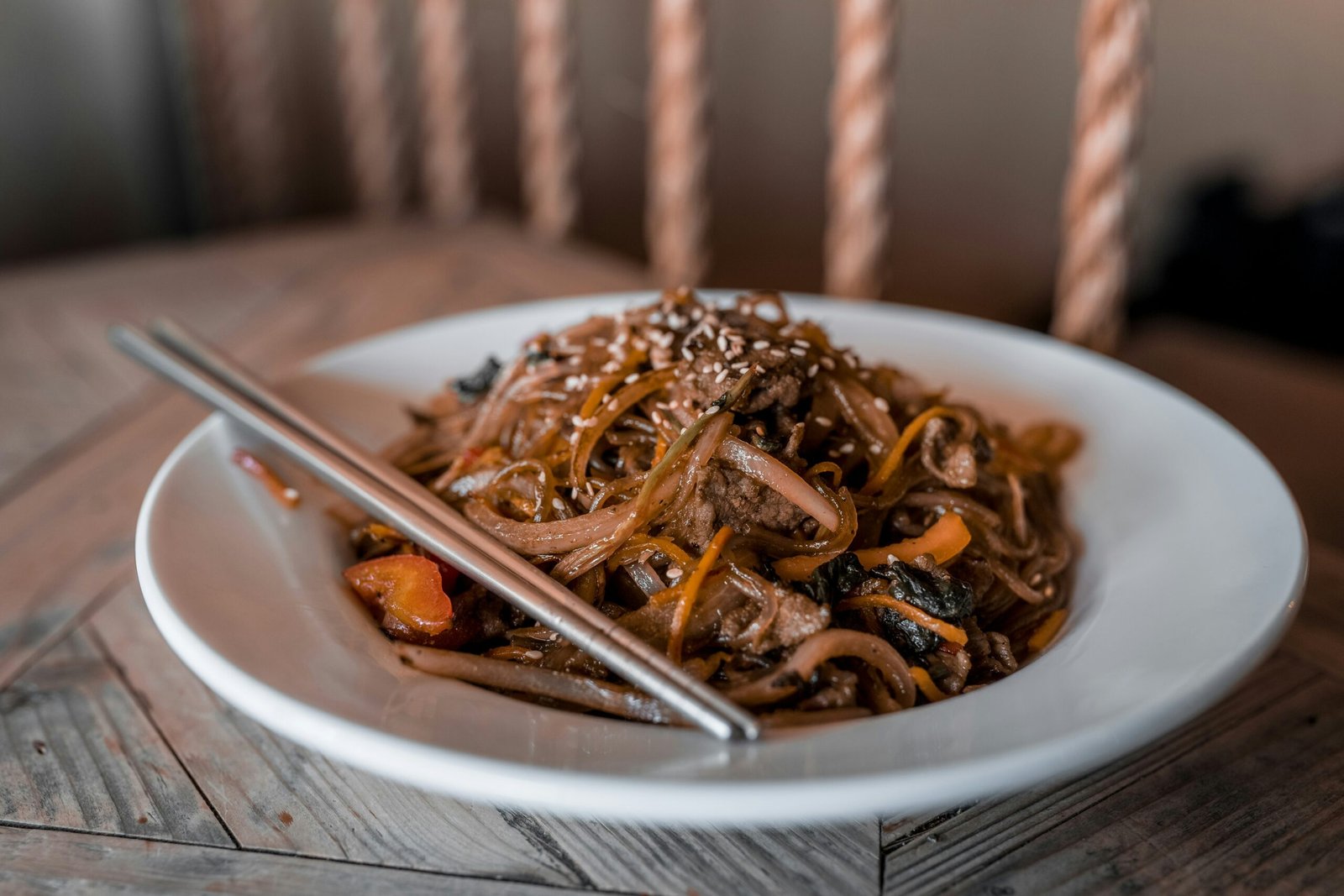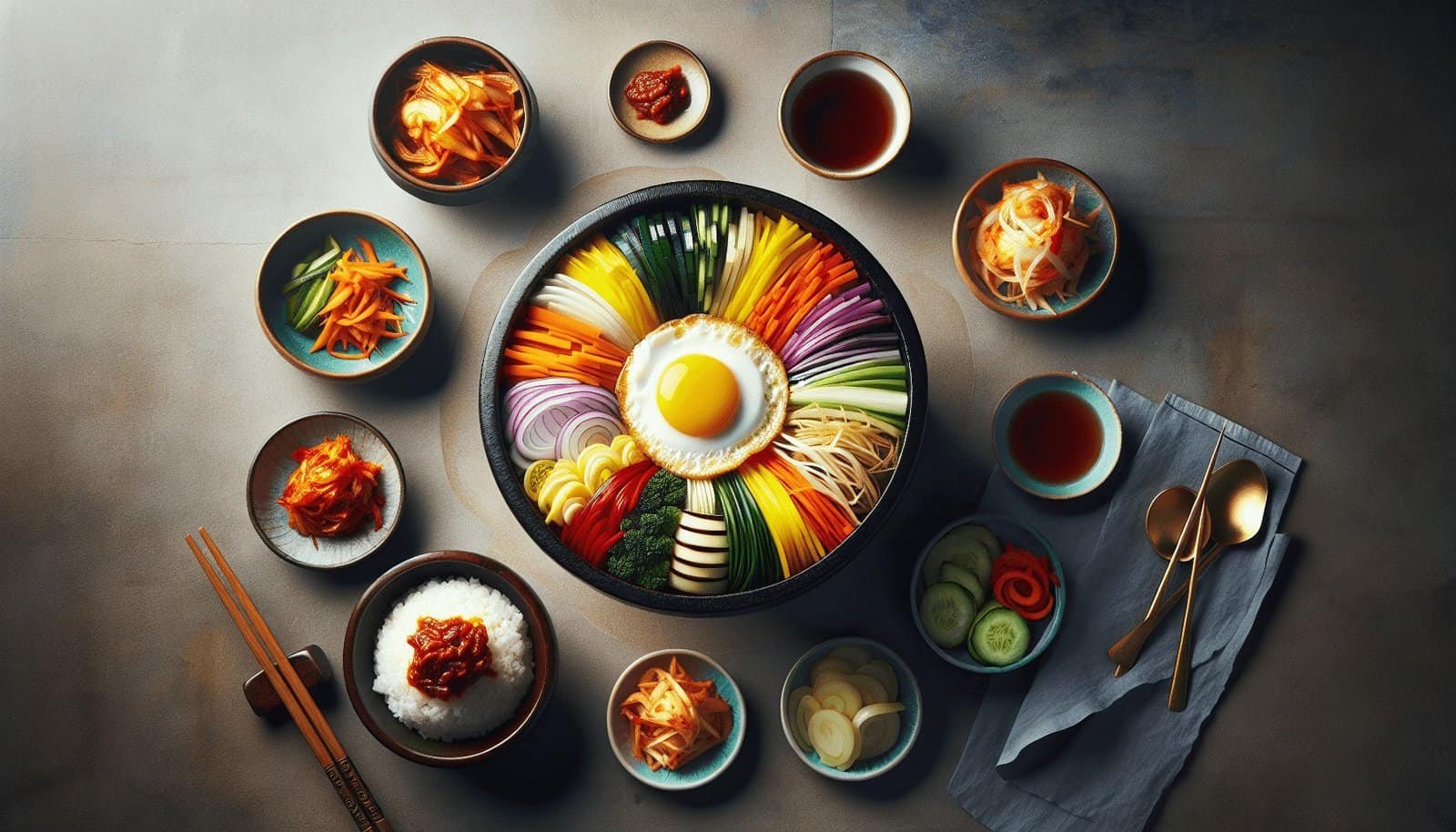If you’re looking for a way to celebrate the elegance of straightforward flavors, look no further than Korean cuisine. Korean dishes have an impressive way of transforming humble ingredients into mouthwatering masterpieces. In this article, we’ll dive into some of the most beloved Korean dishes that truly shine in their simplicity. From the comforting depths of a hearty kimchi stew to the delicate balance of a freshly made bibimbap, you’ll find that these recipes don’t need to be complicated to be absolutely delicious. So, get ready to explore these uncomplicated yet flavorful dishes that highlight the beauty of Korean cooking. Can you recommend Korean dishes that showcase the beauty of simplicity? You’re in luck! Korean cuisine isn’t just about intricate techniques and a multitude of ingredients. It’s also about highlighting the natural flavors and beauty of simple ingredients. Whether you’re a seasoned home cook or just looking for new flavors to tantalize your taste buds, Korean dishes provide a wonderful selection that marries simplicity with deliciousness.
The Korean Philosophy of Simplicity
Korean cooking often places a strong emphasis on using fresh, high-quality ingredients and minimal seasoning to let the natural flavors stand out. Compared to some other cuisines, Korean food can seem surprisingly straightforward. That is part of its charm. The subtle flavors and careful preparation techniques allow each dish to be both satisfying and nourishing.
Here are some elements and dishes that define this philosophy:
Focus on Fresh Ingredients
One of the hallmarks of Korean simplicity is the emphasis on fresh vegetables, seafood, and meats. Unlike heavily processed foods, these components are usually at their peak flavor and quality.
- Vegetables – Fresh cabbage, radishes, scallions, and garlic are common.
- Seafood – Ingredients like anchovies, clams, and oysters frequently appear.
- Meats – Beef, pork, and tofu are often used, focusing on their fresh, natural taste.
Minimal Seasoning
Seasoning in Korean cuisine tends to be rather restrained. Simple ingredients like soy sauce, sesame oil, garlic, and gochujang (red chili paste) are staples that allow the primary ingredients to shine.
Must-Try Simple Korean Dishes
1. Kimchi (Fermented Vegetables)
Kimchi is arguably the most famous Korean dish. It is made by fermenting vegetables, usually napa cabbage or radishes, in a mix of seasonings. Kimchi is simple yet deeply flavorful.
Ingredients:
- Napa cabbage or radishes
- Salt
- Garlic
- Ginger
- Gochugaru (Korean red pepper flakes)
- Fish sauce or shrimp paste
Steps to Make:
- Chop cabbage or radishes and salt them generously.
- Let it sit for a few hours until the vegetables soften.
- Rinse the salted vegetables to remove excess salt.
- Make a paste using garlic, ginger, gochugaru, and fish sauce.
- Coat the vegetables in this paste.
- Store in a jar and let it ferment for a few days.
The beauty here lies in the transformation of simple vegetables through fermentation, offering a depth of flavor that belies its straightforward preparation.
2. Doenjang Jjigae (Soybean Paste Stew)
Doenjang Jjigae is a traditional Korean stew that uses soybean paste (doenjang) as its base. This hearty dish showcases how simple ingredients combined in the right way can create something deeply satisfying.
Ingredients:
- Doenjang (soybean paste)
- Tofu
- Zucchini
- Onions
- Mushrooms
- Garlic
- Anchovy broth or water
Steps to Make:
- Boil anchovy broth or water in a pot.
- Add a spoonful of doenjang, stirring to dissolve.
- Add diced tofu, zucchini, and mushrooms.
- Cook until the vegetables are tender.
- Adjust seasoning with more doenjang or salt as needed.
This dish brings out the robust, umami flavor of the soybean paste, crafted with a handful of fresh ingredients.
3. Bibimbap (Mixed Rice Bowl)
Bibimbap is a celebrated Korean dish that features a bowl of warm rice topped with assorted vegetables, a fried egg, and a dollop of gochujang. It’s stunningly simple yet visually impressive and tasty.
Ingredients:
- Cooked rice
- Mixed vegetables (carrots, spinach, mushrooms, zucchini)
- Soy sauce
- Sesame oil
- Gochujang
- Egg
Steps to Make:
- Saute the vegetables separately using a bit of sesame oil and soy sauce.
- Arrange the cooked vegetables over a bowl of rice.
- Cook the egg sunny-side up and place it on top.
- Add a spoonful of gochujang.
- Mix everything before eating.
Each ingredient retains its natural flavor and texture, which all culminate into a delightful harmony when mixed together.
4. Gyeranjjim (Steamed Egg Custard)
Gyeranjjim is a simple yet elegant dish that involves steaming eggs to create a custard-like texture. It is a soothing and comforting dish, perfect as a side or standalone meal.
Ingredients:
- Eggs
- Water or broth
- Salt
- Scallions
Steps to Make:
- Beat the eggs thoroughly.
- Mix in an equal part of water or broth.
- Add a pinch of salt.
- Pour the mixture into a heat-proof bowl.
- Steam until the custard sets.
- Garnish with chopped scallions.
Here, the eggs’ simplicity is highlighted, and the dish’s creamy, smooth texture provides a comforting experience.
5. Kongguksu (Cold Soybean Noodle Soup)
Kongguksu is a traditional Korean summer dish featuring cold noodles served in a chilled soybean broth. It is incredibly refreshing and showcases how limited ingredients can result in a light and satisfying meal.
Ingredients:
- Soybeans
- Noodles
- Salt
- Cucumber (for garnish)
Steps to Make:
- Soak soybeans overnight and then boil them until tender.
- Blend the boiled soybeans with water to make a creamy broth.
- Cook the noodles according to package instructions and rinse them in cold water.
- Pour the chilled soybean broth over the cold noodles.
- Garnish with cucumber slices.
This dish’s simplicity shines through its understated flavors and refreshing qualities.
6. Baechu Geotjeori (Fresh Kimchi)
Geotjeori is a type of kimchi that is eaten fresh, without fermentation. It has a crisp and light taste, making it a quick and easy side dish to prepare.
Ingredients:
- Napa cabbage
- Garlic
- Ginger
- Gochugaru (Korean red pepper flakes)
- Fish sauce or soy sauce
- Sugar
Steps to Make:
- Chop the cabbage into bite-sized pieces.
- Mix garlic, ginger, gochugaru, fish sauce, and sugar to make the seasoning paste.
- Toss the cabbage with the seasoning paste.
- Serve immediately or let it sit for a short while for flavors to meld.
This type of kimchi allows you to enjoy a fresh and crunchy dish, showcasing the natural taste of raw cabbage.
7. Jangajji (Korean Pickled Vegetables)
Jangajji consists of vegetables pickled in a simple soy sauce-based brine. The vegetables retain their crunchiness and is deliciously umami.
Ingredients:
- Cucumber, radishes, or garlic scapes
- Soy sauce
- Vinegar
- Sugar
- Water
Steps to Make:
- Prepare vegetables by washing and cutting if necessary.
- Combine soy sauce, vinegar, sugar, and water in a saucepan and bring to a boil.
- Pour the brine over the vegetables in a jar.
- Allow it to cool before refrigerating.
Jangajji highlights how simple brining can enhance the natural flavors and textures of fresh vegetables.
8. Mu Namul (Seasoned Radish)
Mu namul is a classic banchan (side dish) made from radishes seasoned lightly to retain their natural flavor.
Ingredients:
- Radish
- Salt
- Sesame oil
- Garlic
Steps to Make:
- Julienne the radish.
- Salt the radish and let it sit for about 30 minutes.
- Rinse and squeeze out the excess water.
- Mix with sesame oil and minced garlic.
This side dish offers a crisp and aromatic experience, emphasizing the radish’s inherent qualities.
9. Gamja Jorim (Braised Potatoes)
Gamja jorim is a simple but flavorful potato dish that is lightly braised in soy sauce and sugar.
Ingredients:
- Potatoes
- Soy sauce
- Sugar
- Sesame oil
- Water
Steps to Make:
- Peel and chop potatoes into bite-sized pieces.
- Braise the potatoes in a mixture of soy sauce, sugar, sesame oil, and water.
- Cook until the potatoes are tender and the sauce is well-absorbed.
Each bite is a satisfying blend of savory and sweet, showcasing the potato’s texture and flavor.

Ingredient Guide for Simple Korean Dishes
To make these dishes, you’ll need some basic pantry staples common in Korean cuisine. Below is a handy table to help you stock up.
| Ingredient | Uses |
|---|---|
| Soy Sauce | Seasoning, marinades, dips |
| Sesame Oil | Cooking, flavoring |
| Gochujang | Stews, sauces, bibimbap |
| Doenjang | Soups, stews, marinades |
| Gochugaru | Kimchi, seasoning |
| Garlic | Almost every dish |
| Ginger | Seasoning, marinades |
| Rice | Staple base for many meals |
| Tofu | Soups, stews, side dishes |
Cooking Techniques to Keep It Simple
Mastering the art of simplicity in Korean cooking involves some fundamental techniques:
Blanching
Blanching vegetables like spinach, bean sprouts, and radishes helps maintain their vibrant color and crunch while softening their texture just enough to absorb seasonings.
Steaming
Steaming, as used in making gyeranjjim, helps conserve the natural flavors and nutrients of ingredients, giving them a light, tender texture.
Quick Pickling
Quick pickling, as in jangajji, is an efficient way to enhance the natural crunch and flavor of vegetables while adding a tangy zest.
Minimal Sautéing
Using sesame oil and soy sauce to lightly sauté vegetables retains their freshness and crunch, making them perfect for dishes like bibimbap.

Breaking Down the Balance of Flavors
Korean cuisine often emphasizes a balance of flavors – spicy, salty, sweet, sour, and umami. This balance is achieved even in the simplest dishes:
Spicy
Gochujang and gochugaru are the primary sources of heat in Korean cooking. Whether they’re used in kimchi or as a topping for bibimbap, they add a significant kick.
Salty
Soy sauce and salt are used sparingly to enhance the natural flavors of ingredients without overpowering them.
Sweet
Sugar or honey is sometimes added to create a mild sweetness, balancing out the salt and spice, as seen in gamja jorim.
Sour
Fermentation processes in kimchi introduce a pleasant sourness, which is crucial for balancing rich, fatty foods.
Umami
Ingredients like doenjang, soybean paste, and anchovy broth provide deep umami flavors without requiring extensive cooking techniques.
Health Benefits of Korean Simplicity
Keeping it simple in Korean cooking isn’t just easy on the taste buds; it’s also good for your health. Fresh vegetables, fermented foods, and lean proteins play a dominant role, ensuring a nutritious diet.
Fermented Foods
Kimchi and other fermented dishes promote gut health due to their high probiotic content.
Fresh Vegetables
A diet high in fresh vegetables contributes to overall health, providing essential vitamins and minerals without excessive calories.
Lean Proteins
Tofu and lean meats like pork and chicken provide necessary amino acids while keeping the fat content relatively low.
Balanced Diet
The combination of various flavors and textures ensures a balanced diet, making every meal satisfying and nutritious.

Concluding Thoughts
Korean cuisine is rich and varied, but its simpler aspects are no less remarkable. By focusing on fresh ingredients, minimal seasoning, and straightforward cooking methods, you can bring the beauty of Korean simplicity into your own kitchen.
So the next time you wonder, “Can you recommend Korean dishes that showcase the beauty of simplicity?” you’ll know exactly where to look. Happy cooking!
